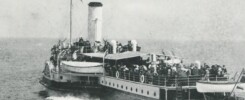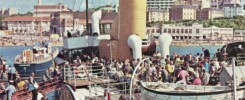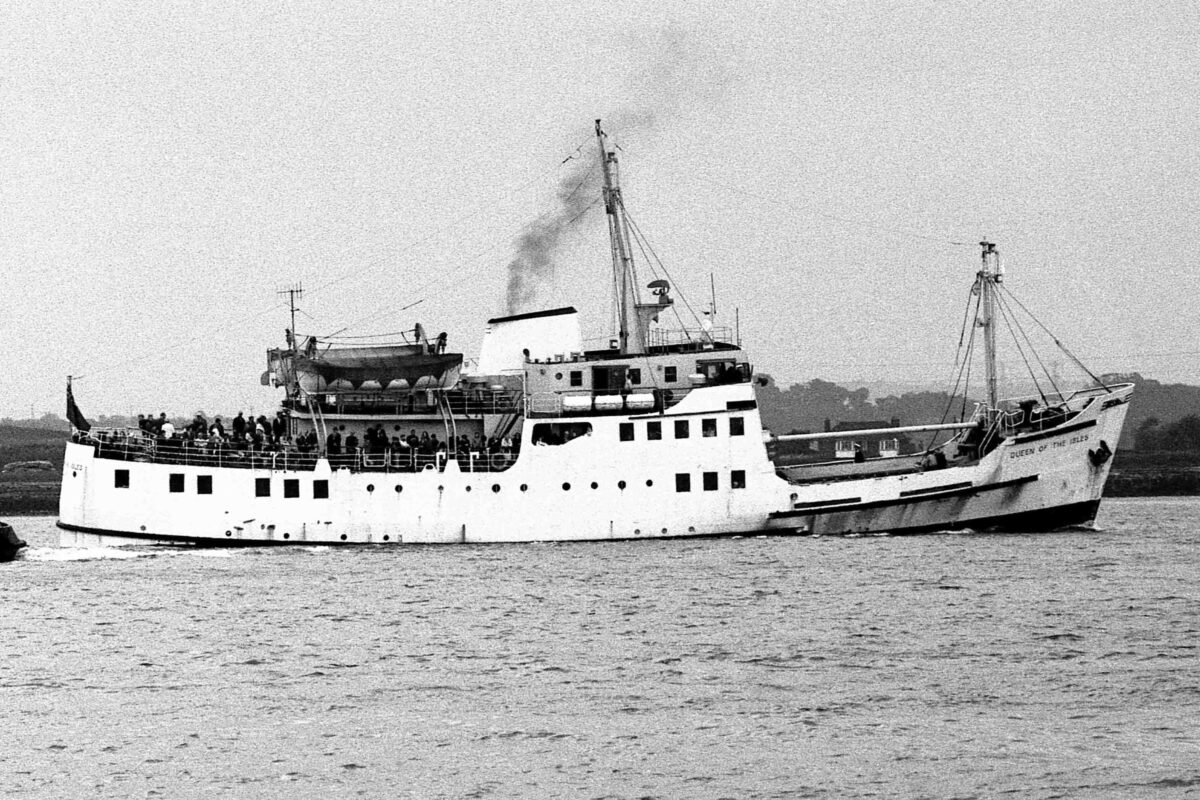
Although the excursion trade initially boomed in the aftermath of the Second World War, by the middle of the 1950s it was in steep decline. By the second half of the 1960s the business was all but gone with only small pockets left struggling to remain solvent on the Bristol Channel and the Clyde. However it was not all doom and gloom. The market for smaller domestic passenger vessels with low crew numbers, carrying up to around 250 passengers and running short, or shortish, cruises on Class IV, V and VI Passenger Certificates continued to be buoyant. It remains so even today with almost 1,000 such vessels still in service in the UK offering trips on rivers, estuaries, lakes, lochs, canals and for short distances to sea..
But for the larger Class III passenger ships in general the writing was on the wall. 1956 was the last season P & A Campbell operated a paddle steamer, Glen Gower, from the Sussex Coast piers across to the Continent.
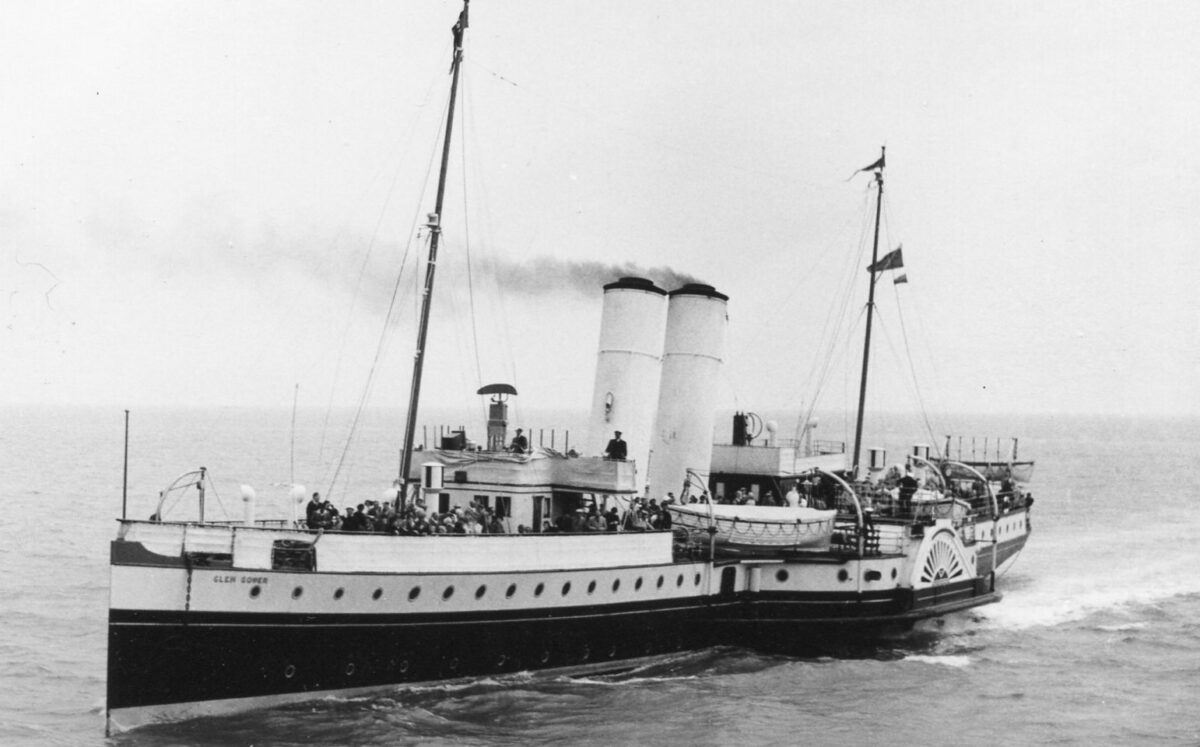
By 1967 the General Steam Navigation Company had given up sailings on the Thames and across to France and their excursion ships put up for sale. Their Royal Sovereign had been acquired by car ferry operator Townsends at Dover, converted to carry vehicles and renamed Autocarrier. So although fitted out for a different cross Channel ferry role between Dover and Calais she was not that far away from her old routes.
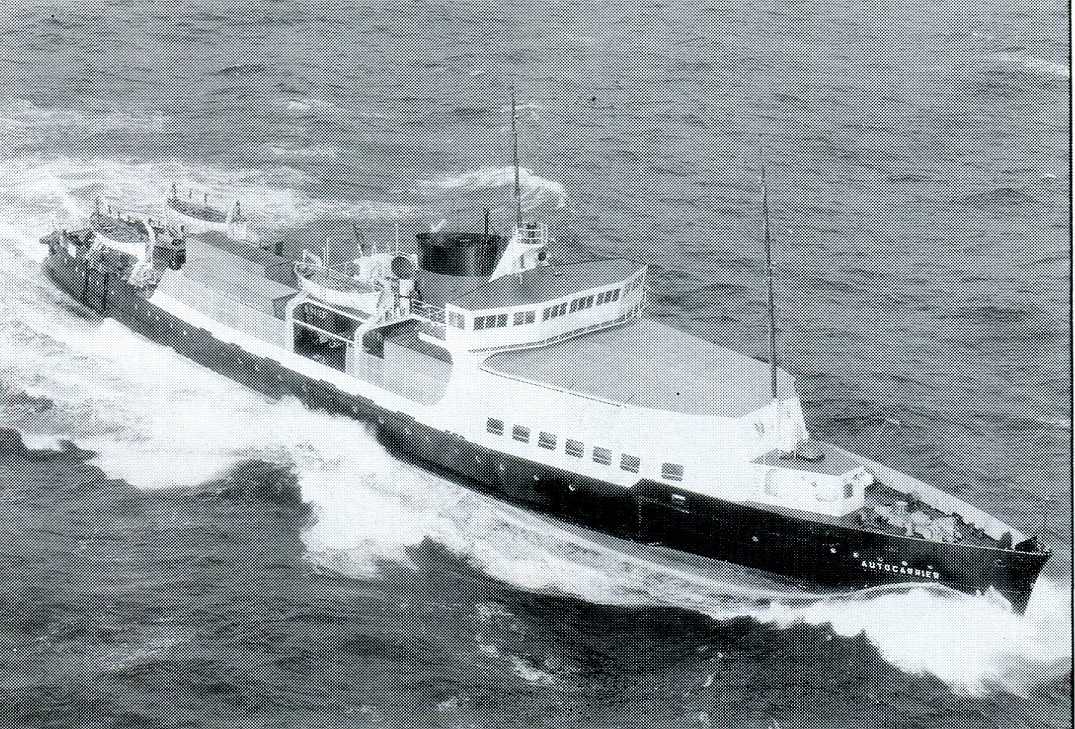
Townsend was the parent company which then owned P & A Campbell. Clifton Smith Cox, Managing Director of P & A Campbell, expressed an interest in using Autocarrier in her new form to revive some Thames excursions Sundays to Thursdays when she was not initially needed on the Dover/Calais ferry service. A provisional timetable was drawn up with a start date pencilled in for 2nd June 1968. On this she was rostered to run backwards and forwards between Deal, Ramsgate and Margate on Sundays, between Deal, Ramsgate, Margate and Clacton on Mondays, between Clacton, Margate and Deal on Tuesdays, between Southend, Margate and Deal on Wednesdays and between Margate, Southend and Clacton on Thursdays. There was also one trip in the provisional schedule to run from Hastings to Shanklin in August. It was an ambitious programme which in the end never happened. On further consideration it was felt that in her rebuilt car carrying form Autocarrier was no longer suitable for accommodating large numbers of passengers on day excursions. She had been bought to provide extra vehicle capacity on the Dover/Calais route. That is what she was now for. That is what she should now do.
However P & A Campbell still wanted to give these excursion ideas a go and indeed expand them to include some sailings from their previously abandoned Sussex Coast operations. So the following year, 1969, a plan was hatched to put in place a complex timetable including London, Southend, Clacton, Margate, Ramsgate, Deal, Hastings, Eastbourne, Shanklin, Boulogne, Calais and Ostend using the twin screw motor vessel Queen of the Isles on charter from the Isles of Scilly Steam Ship Company. She had been built in 1964 for a route on which her capacity was rarely needed to augment the sailings of the main ship Scillonian between Penzance and the Isles of Scilly. For 1968 she had been chartered by P & A Campbell for their services along the North Wales Coast. For 1969 they would giver her a go on this new and complex schedule operating on a roughly fortnightly cycle linking all these Thames and South Coast piers.
As a try out for that at the end of the 1968 season she was rostered for a trip along the South Coast calling at piers as she went and that is how I first met her. On Saturday 14th September 1968 she set off from Ilfracombe (12 noon) for Penzance (9.20pm), Weymouth (8.30am the next day), Bournemouth (11am), Eastbourne (6.20pm) Hastings (7.30pm) and Dover (11.30pm). For this I went down to watch her arrive at and depart from Weymouth. It was a breezy day with the wind in the east. I had in my possession at that time (and still have) a text book for Second Mate’s COC. In that there are many diagrams showing ship handling in different circumstances including how to come into a quay on the starboard hand with the wind behind you, swinging on the anchor off the berth and then berthing alongside port side to head to wind. This was a complex manoeuvre which I had never before seen executed by a real ship. So I was thrilled to observe that this was exactly how Queen of the Isles’s master brought her in to berth at the Weymouth Pleasure Pier on that morning. Jackpot.
All went well so for the 1969 season Queen of the Isle was advertised to start on Saturday 24th May with a sailing from Tower Pier London (9am) to Southend (11.55am) and Margate (2.35pm-3.50pm) with a sea cruise from there in between before returning to Southend (6.20pm) and London (9.45pm).
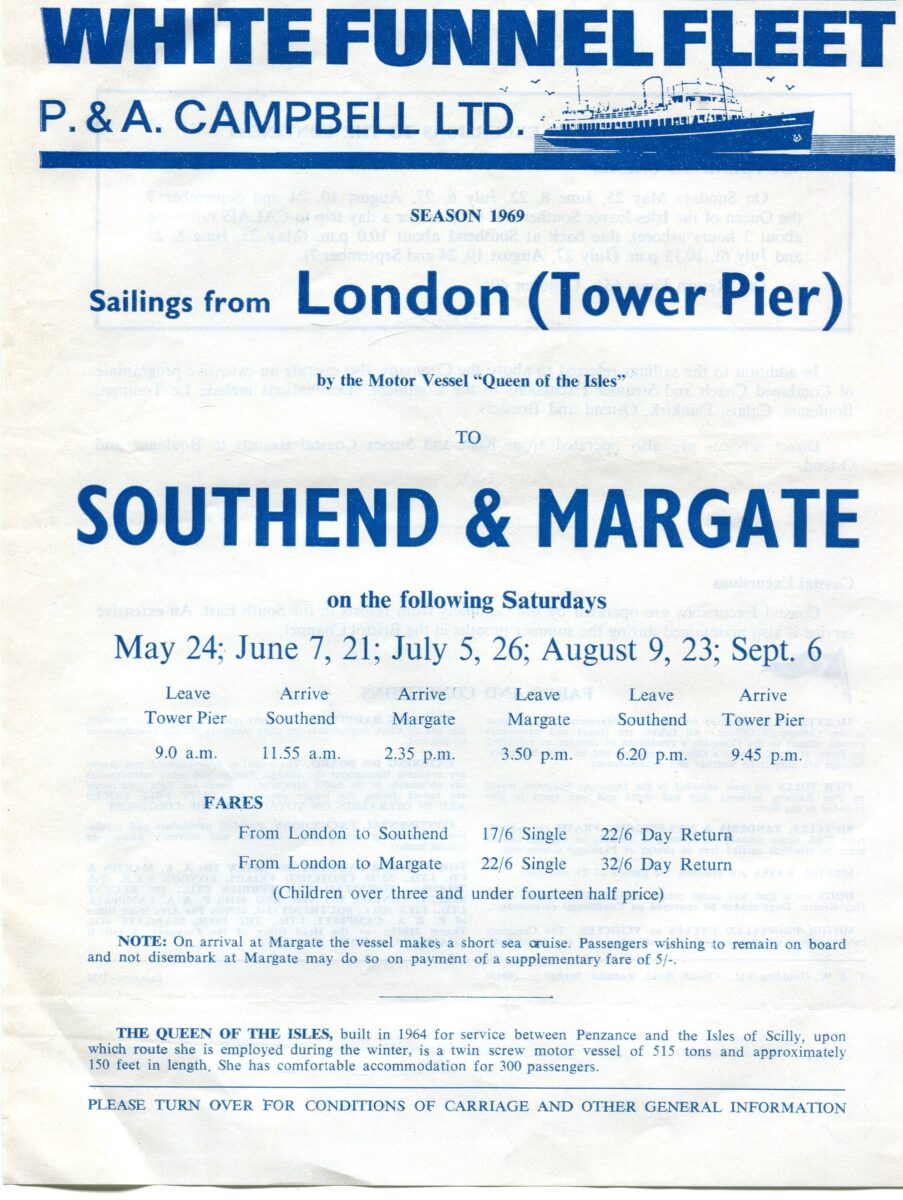
After that Queen of the Isles sailed back down river without passengers to position herself for Sunday 25th when she was due away from Southend (9am) to Calais (2pm-5pm) due back 10pm.
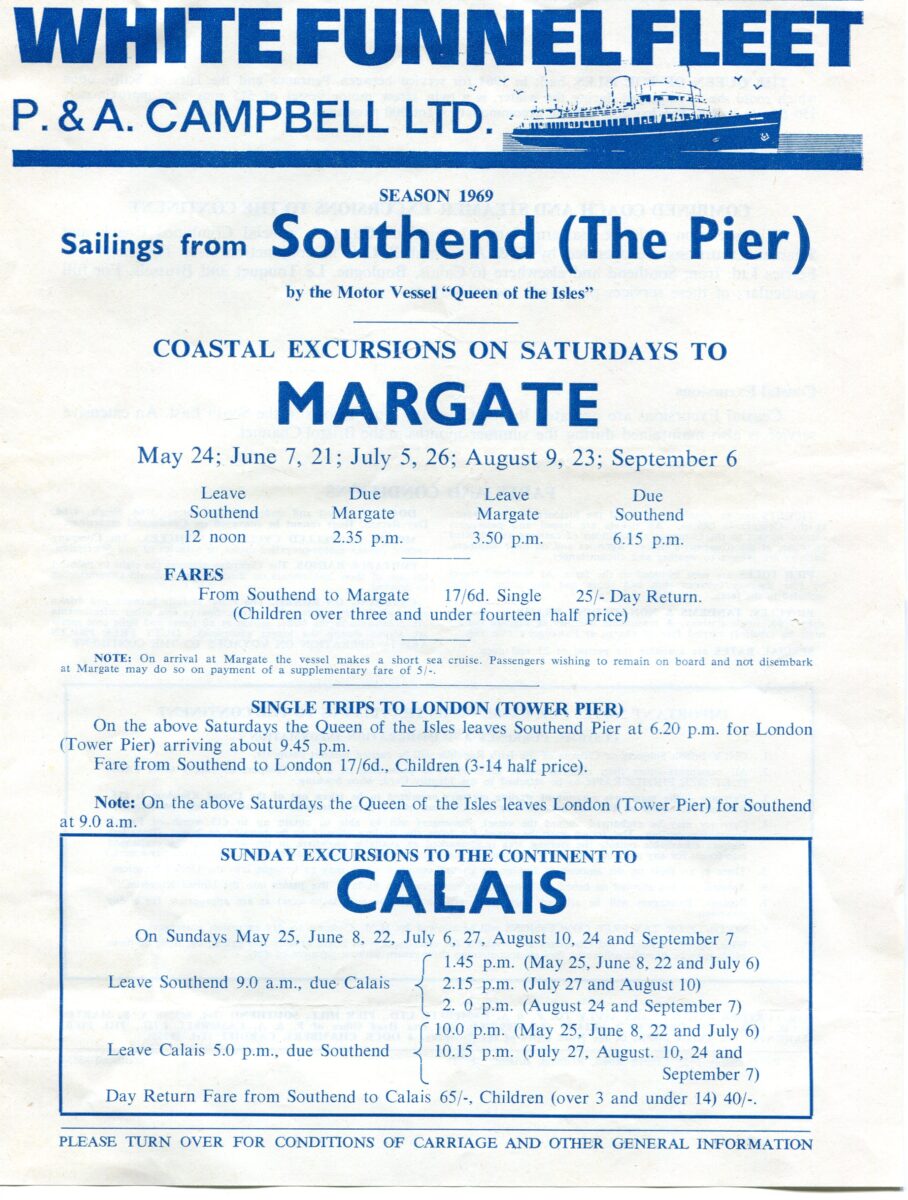
Then it was away again without passengers to spend the night anchored off Margate in readiness for Monday 26th for which she was scheduled to run a Morning Cruise from Margate (10.45am) towards the Tongue Sand Fort due back at 12.15pm. Then at 12.30pm for Deal (1.45pm-1.55pm) and back to Margate (3.35pm) for Deal (4.55pm) for Margate (6.20pm). There was then an Evening Cruise advertised from Margate (7pm) calling at Ramsgate (7.50pm) returning to Margate (8.35pm) and Ramsgate (9.35pm).
On Tuesday 27th she was rostered to leave Ramsgate (9.30am), with a coach connection from Margate (8.40am), for Ostend (2pm-5.30pm) due back Ramsgate (10.15pm) and Margate (by coach 11.05pm).
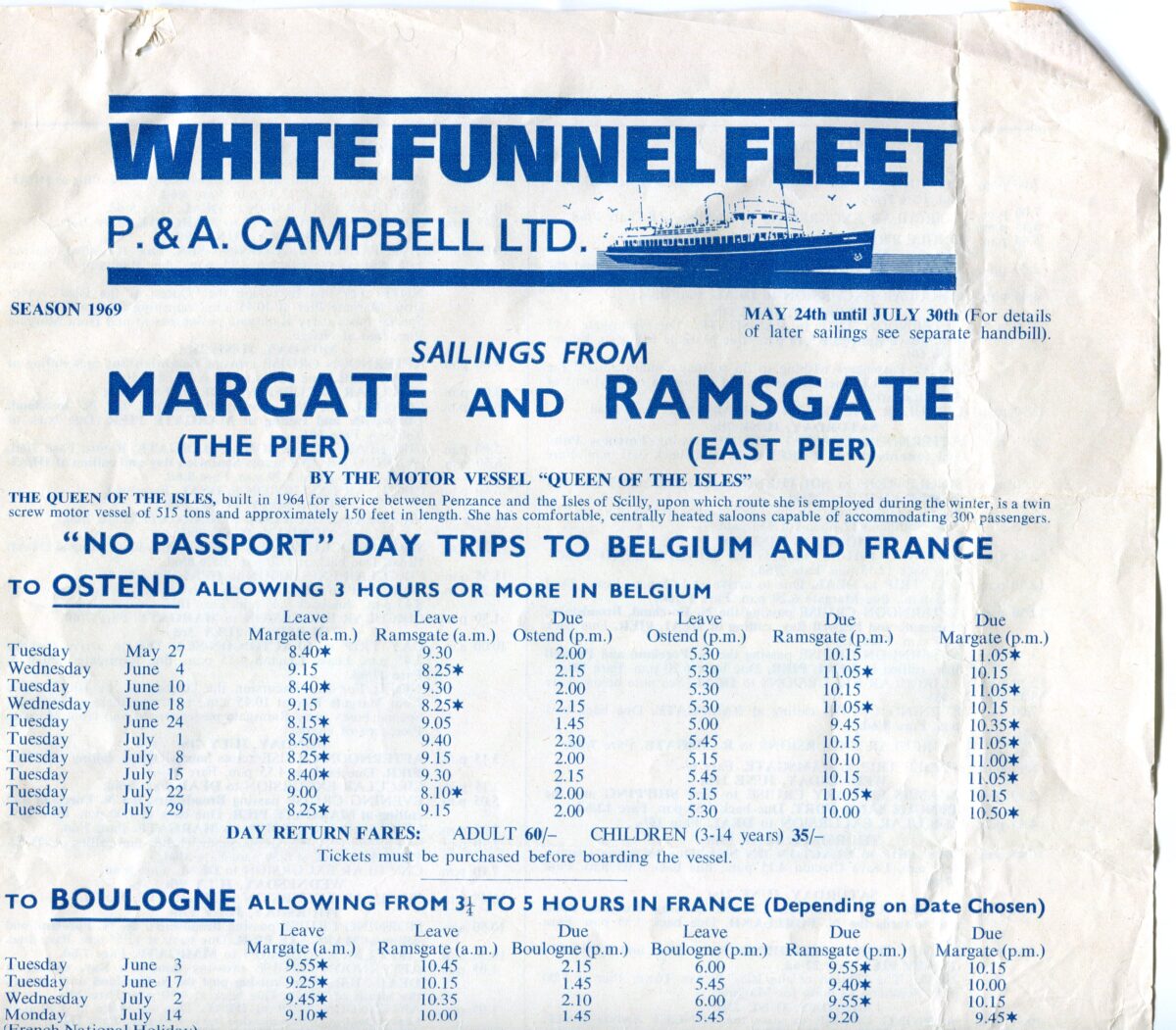
On Wednesday 28th May she was due away from Margate (2.30pm) for a “Thames Estuary Cruise to view shipping and the Tongue Sand Fort” due back (4.30-4.45) before leaving for a single trip to Deal, with passenger return on any East Kent service bus. After that she set off to position herself to anchor for the night off Hastings in readiness for her next day’s trips.
On Thursday May 29th she was due away from Hastings (9.45am) with coach connection from both Brighton (7.45am) and Eastbourne ( 8.30am), for Boulogne (1pm-6pm) due back at Hastings (9,30pm) with coach return to Eastbourne (10.45pm) and Brighton (11.30pm) which is a pretty late return from a day trip by any standards.
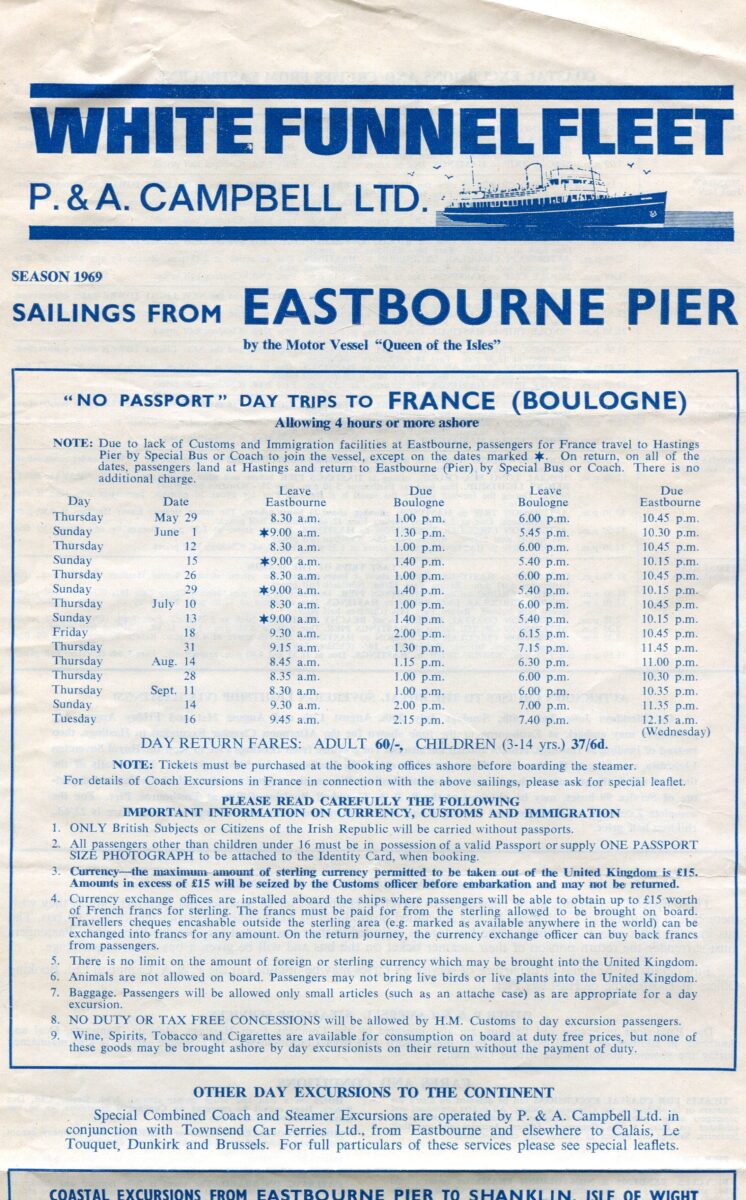
On Friday May 30th she was due away from Eastbourne (10am), with no call at Brighton as the pier no longer accepted visits by passenger vessels, for Shanklin (2.25pm) from where she offered a “Grand Afternoon Cruise along the Island Coast” due back (4.15pm) before returning to Eastbourne (9pm).
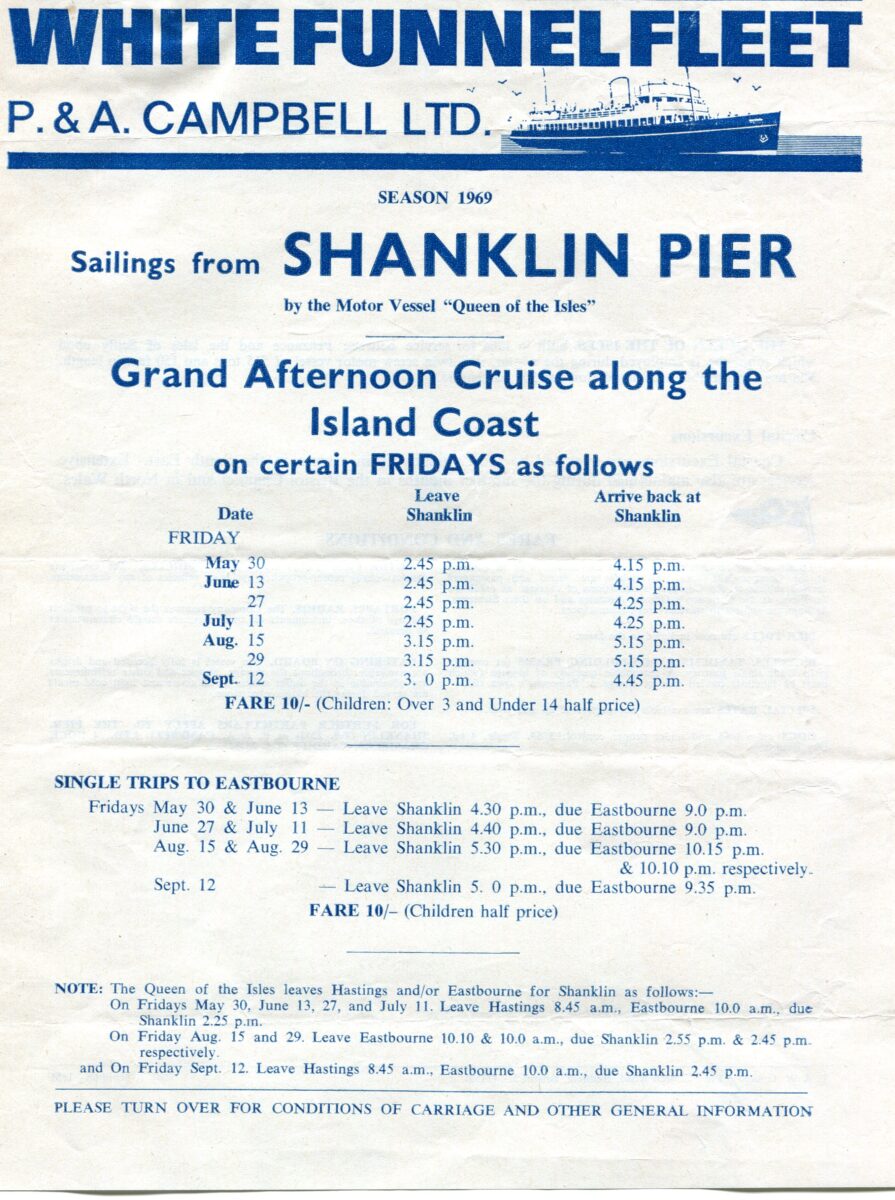
Saturday May 31st appears to have been a day off service which she is likely to have spent alongside at Newhaven taking on bunkers and stores.
On Sunday June 1st she was scheduled to be away from Eastbourne (9am), with coach connection from Brighton (8.10am) and picking up at Hastings (10.10am) for Boulogne (1.30pm-5.45pm) due back Hastings (9.15pm) with return to Eastbourne (10.30pm) and Brighton ((11.15pm) by coach.
On Monday 2nd June she was due away from Eastbourne (11.15am) “To View the Royal Sovereign Lightship and the New Light Tower under construction” due back (12.45pm) before leaving (1pm) for a single trip to Hastings (2.05pm) with passenger return on Service 99 bus with Queen of the Isles continuing on a positioning run without passengers to Ramsgate.
On Tuesday June 3rd she was away from Ramsgate (10.45am) with coach connection from Margate (9.25am) and picking up at Deal (11.30am) on her way to Boulogne (1.45pm-5.45pm) due back Deal (8.45pm), from where passengers for Ramsgate (9.55pm) were taken forward by coach and Margate (10.15pm)
On Wednesday June 4th she was scheduled to leave Margate (9.15am) with coach connection from Ramsgate (8.25am) for Ostend (2.15pm-5.30pm) due back Margate (10.15pm) with onward coach to Ramsgate ( 11.05pm).
On Thursday June 5th she was away from Ramsgate (1pm) for Margate (2.30pm) for Ramsgate (3.25pm) for an “Afternoon Cruise towards the N Goodwin Lightship due back (4.55pm) before setting off (5.10pm) for Margate (6pm).
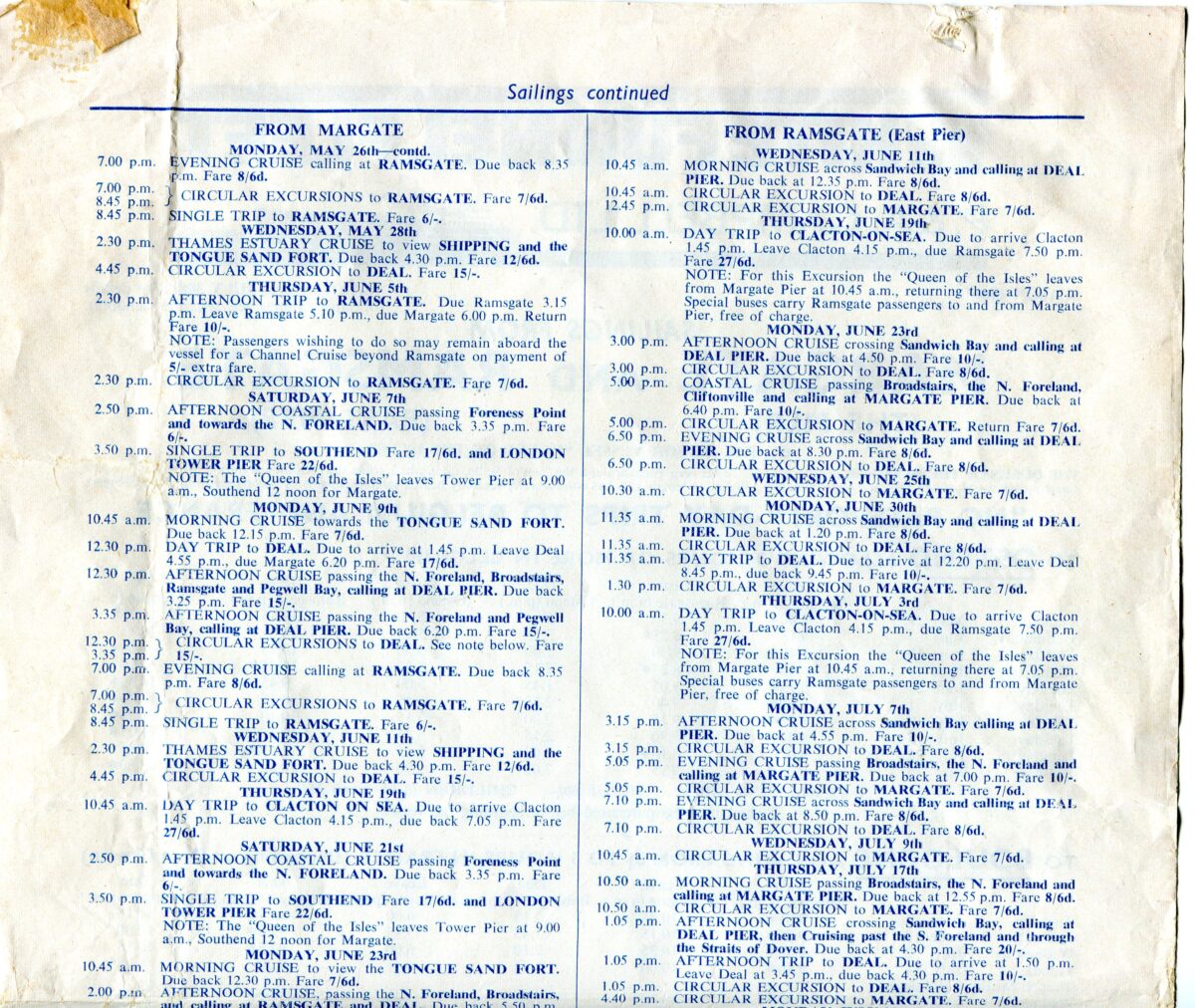
Friday June 6th appears to have been an off service day with the ship positioning herself at some stage in readiness to start the fortnightly cycle once again with another sailing on Saturday June 7th from Tower Pier to Margate and on Sunday 8th from Southend to Calais. And so it went on for the seaons.
As you have seen the operating days on this complex and extensive service were often very long. The regular positioning runs added to the hours the crew worked as well as to the fuel bill. The timetable was further complicated from June 19th by intermittent calls at Clacton which offered both local trips from that resort and crossings to and from Margate.
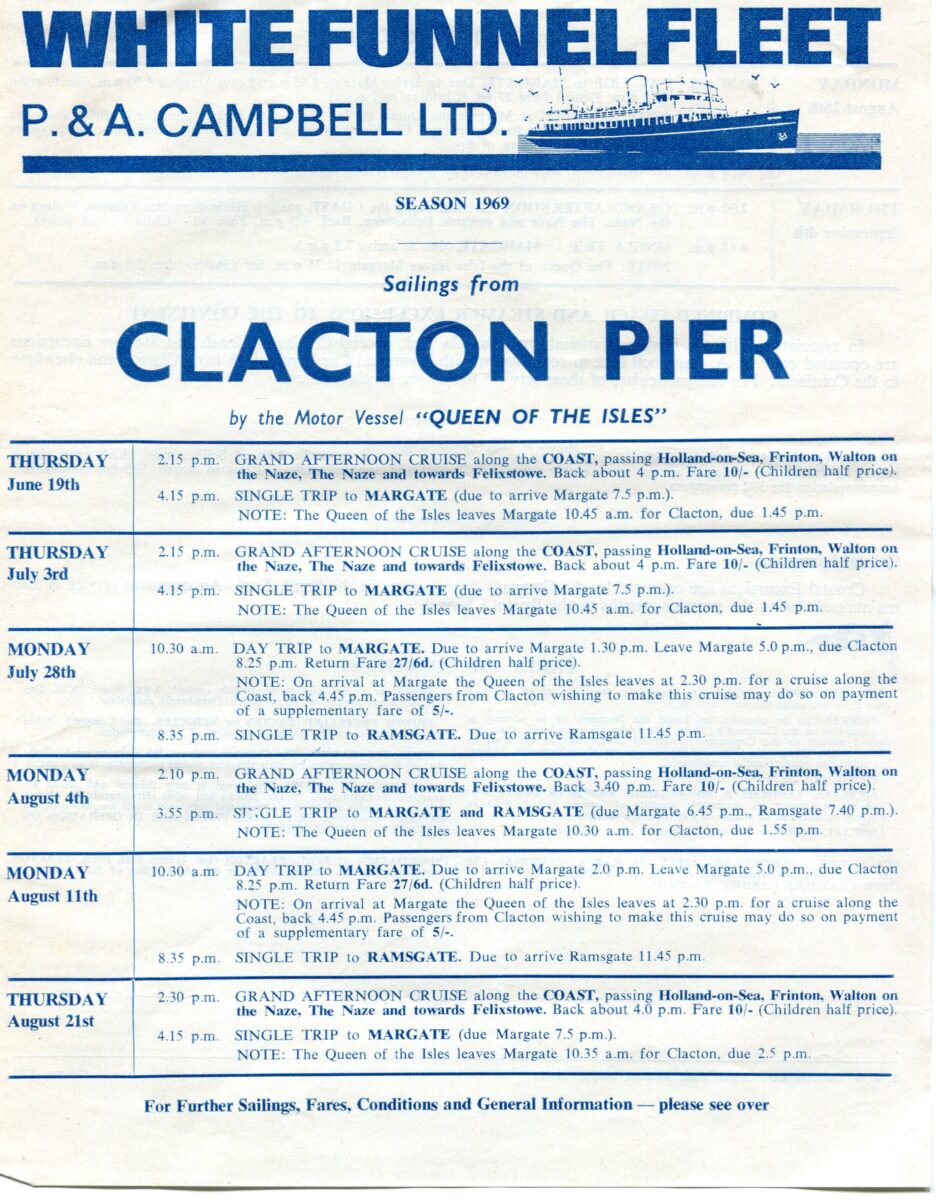
I very much wanted to get a trip on her that summer but it didn’t work out. I had managed to wangle myself a summer job that season between school and university as mate of the 150 passenger vessel Weymouth Belle running on some of the old Cosens’s paddle steamer routes from Weymouth around Portland Harbour, to Lulworth Cove and Portland Bill. That was a seven day a week job. There were morning, afternoon and evening cruises Sundays through to Fridays. On Saturday mornings we had to come in to maintain the vessel and sometimes on Saturday evenings there were charters. So, as with the Queen of the Isles, the hours were very long day in day out. But I lapped it up. I just loved it. That was a very happy summer for me.
It was also a golden era before Hours of Work Regulations and a seemingly endless bureaucracy brought in so many complexities which have made domestic passenger vessels so much harder and more expensive to operate today than in earlier times. And that is not just about safety. Of course safety must always be the highest priority for all who go afloat. But there were ever well run ships in the days before Safety Management Systems were invented which were operated to a very high standard without the plethora of files, checklists and other paperwork deemed so essential by today’s generation of mariners. Not everything in the past was bad.
I remember Board of Trade surveyor Captain Mays, who examined me for my first ticket all those years ago, saying that a keen and experienced eye could tell whether a ship was well run or not within minutes of stepping aboard just by looking and listening. He was right in that. He also said that he could tell a good candidate within minutes of starting an oral examination. And he was right about that too. Good candidates ever have short orals. The answers come quick and fast and right. It is the weaker ones who have the longer sessions as the examiner probes them onwards in the (sometimes forlorn) hope that the candidate will eventually give the sort of sensible and well informed answers for which he/she is looking.
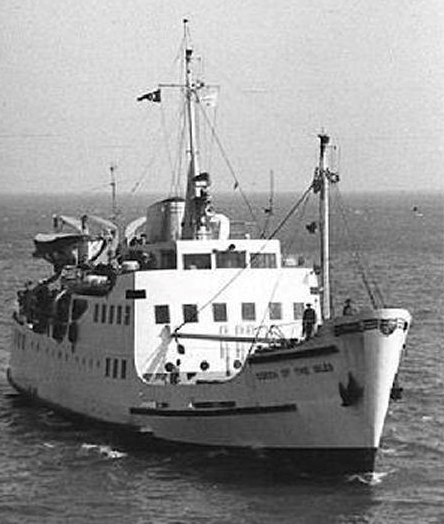
But back to the Queen of Isles. I understand the underpinning logic of P & A Campbell planning a season like this. With the large vessel excursion market in such steep decline by then there was just not enough business to sustain such a ship in any one resort on a daily basis throughout a whole season. But maybe there would be enough punters for a couple of days here, a couple of days there and a couple of days somewhere else repeating that pattern over a fortnightly cycle.
It was a heady hope which in the end turned out not to be justified. The summer 1969 edition of Ship Ahoy records that Queen of the Isles carried only 200 passengers on her first trip from London to Margate and 27, yes that’s right 27, on her first cross Channel sailing from Hastings to Boulogne. P & A Campbell did not repeat the experiment in 1970 and Queen of the Isles was subsequently sold for further service in Tonga.
Kingswear Castle returned to service in 2023 after the first part of a major rebuild which is designed to set her up for the next 25 years running on the River Dart. The Paddle Steamer Kingswear Castle Trust is now fund raising for the second phase of the rebuild. You can read more about the rebuilds and how you can help if you can here.
John Megoran

